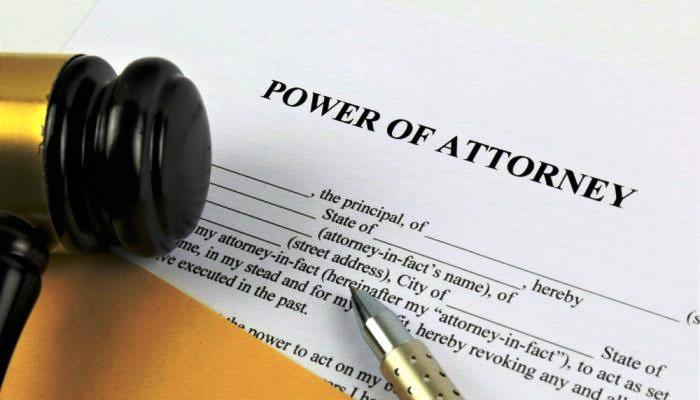Property Boundary Disputes with Neighbors
As Robert Frost once wrote, good fences make good neighbors. Indeed, having a clear sense of boundaries—where your land ends and your neighbor’s begins—is critical to having a good relationship. Your land is probably your most valuable asset, and also most likely your neighbors’ most valuable asset as well. Not surprisingly, then, a boundary disputes can become very heated very quickly.
Boundary disputes may be a question of confusion or uncertainty; perhaps neither you nor your neighbor has ever really looked at your respective deeds, and both had different assumptions about the extent of your property. A boundary dispute can also be for more technical reasons; perhaps your neighbor’s deed actually shows possession of the same bit of land over which your deed ostensibly gives you possession.
There are different types of boundary disputes and different approaches to solving them. Cooperation and diplomacy, however, are often the best solutions, no matter which side of the fence or property line you’re on.
Defining Boundary Disputes and Property Lines
What are boundaries or property lines? Essentially, these are the lines on a county’s tax map that define and set apart different parcels of land. In condominium units, these sorts of “lines” are very simple, since you can easily spot the “beginning” and “end” of an apartment unit.
But boundary lines can become more complicated in single-family residential, suburban, or rural settings. While natural boundaries like ponds or roads can help establish lines, the property line is often an arbitrary line through a lawn or field. And sometimes the landscape itself has changed, for example, if a lake has dried up or someone built a fence in the wrong place. In these situations, spotting the line with your eyes isn’t possible.
First Steps When a Dispute Emerges
When you realize that you and your neighbor have different understandings of where the boundary line is, you should be proactive. The first step is to schedule a real discussion, where each of you brings your various legal documents, largely from the home transfer and title insurance files—deeds, plat maps, and property surveys—to the table.
Sharing this sort of objective information might help you to avoid further conflict or litigation. There might be a simple misunderstanding.
If your deeds or existing surveys are unclear, you and your neighbor might agree to hire a land surveyor to give you an objective report regarding the property boundaries.
If factual information isn’t resolving the dispute, you might also hire a mediator to facilitate a negotiation between you and your neighbor. The mediator will help you to generate options that would not be possible in court—for example, perhaps there is an imaginative way of renting or sharing the disputed land that would leave both of you better off.
Will Title Insurance Cover the Dispute?
Unfortunately, the standard title insurance policy contains an exclusion specifically meant to make sure the company does NOT get dragged into boundary line disputes. (The language may refer, for example, to matters that “would be disclosed by an accurate survey and inspection of the premises.”)
Nonetheless, it’s worth reviewing your policy and bringing the dispute to the attention of your title insurer. In the best-case situation, it might agree to provide legal representation and litigate the dispute.
How a Lawyer Can Help With Your Boundary Disputes
You won’t always be able to solve boundary issues on your own, or even with the assistance of a land surveyor or mediator. You might want to consult an attorney, especially if the dispute is over a significant piece of land.
Keep in mind: A lawsuit against your neighbor is seldom a good idea. Even if you “win”, you are often stuck living next to your former adversary. This can create awkwardness and tension for years. Moreover, litigation will be time-consuming and expensive for both you and your neighbor. Nevertheless, a lawsuit is sometimes the only way to settle a significant boundary disputes.
There are generally two types of lawsuits (or “causes of action”) related to boundary conflicts.
First, you can sue for continuing trespass or ejectment. In a continuing trespass or ejectment action, you are asking a judge (typically a state court judge) to find that your neighbor is trespassing on your land, and further ordering that the neighbor remove him- or herself and any possessions. This type of lawsuit can win you money damages in some cases, especially if you can show that the value of your home has been diminished by your neighbor’s extensive, continuous occupation over part of your land.
Second, you can sue for a declaratory judgment. A declaratory judgment is a way to put your dispute in front of a judge and have the judge make a legal determination as to whether or not you own the subject land. A declaratory judgment is, perhaps, a less aggressive form of litigation, since it does not ordinarily include an award of money damages (unlike trespass). It simply entails a neutral jurist making a determination based on the applicable deeds and laws.
Property Improvements a Common Source of Boundary Disputes
Neighbors rarely begin random arguments over boundaries. More often, boundary issues arise when a property owner makes improvements or changes—erects a new fence or wall, for example. A dispute against a neighbor might soon become ripe for a lawsuit if the neighbor:
- constructs an improvement that clearly crosses a property line
- fails to obtain building permits before starting work or installations
- doesn’t obtain approval from a required source such as a city or town planning commission or homeowners’ association
- builds an improvement that violates a state law, local ordinances such as a zoning restriction, or the covenants, conditions, and restrictions (CC&Rs) of a homeowners’ association.
- constructs an improvement that violates a restrictive covenant (a clause in a deed limiting property use), or
- interferes with an established property use, such as by blocking a path or driveway.
And if you are considering making a change to your property, be sure you speak with your neighbor first. This is especially true if you plan to construct a fence or wall between your two properties along the line where—you think—the boundary rests.
Anticipate Defenses Your Neighbor Might Raise
Be ready for your neighbor’s defenses, and review the strength of your possible responses before you decide to file a lawsuit. A neighbor’s most likely defenses with regard to a boundary dispute might include:
- You have the facts wrong or have incorrectly read the deed to your property.
- Your neighbor owns the disputed property through adverse possession, a doctrine that allows someone who has used a piece of property without the owner’s objection for a statutorily prescribed number of years (for example, seven in Florida, ten in New York, and 20 in Maryland and New Jersey) to gain ownership over that piece of land.
- Property use established a prescriptive easement, authorizing your neighbor to come across your property.
- You gave consent to use your property.
- You waited too long file a lawsuit, and the statute of limitations (the allowable time within which to file) ran out.
Familiarity with the legal and factual issues can help you communicate with your real estate attorney and find the best way to solve your boundary dispute, in or out of court.




